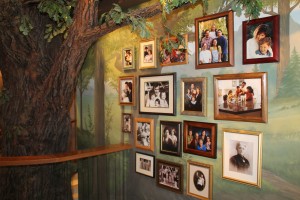Family history work is not merely for the retired, but for young adults. Because of rising generations’ technological aptitude, Church leaders have predicted young adults will help accelerate the work.
Given the tremendous potential, there are many opportunities and services available that students in Utah County can utilize when doing their family history work.
BYU Family History Library
The BYU Family History Library has access to hundreds of databases that would otherwise require users to pay a fee, but which are free of charge, through the Harold B. Lee Library, to current students.
Lindsey Baldridge, a reference assistant from Pleasant Grove, provides help to students. According to Baldridge, the BYU Family History Library has reference books on family history and religion, as well as scanners and microfilm viewers to view and copy film that can be ordered from the Salt Lake Family History Center.

Through the family history main page, students are able to find a compilation of online databases and sources to help them further their search.
“For those who have never looked into their family history, it may seem too overwhelming to accomplish,” Baldgridge said. “However, the search programs take you through each step and make it seem easier. Also, the family history center is staffed with missionary consultants that specialize in family history work. It really is easy once you jump into it.”
In addition to the resources provided through the university, other local family history centers in surrounding areas have volunteers to provide assistance to visitors.
Salt Lake Family History Library
The family history library in Salt Lake City is the largest in the world. With over 100 professional staff members and roughly 700 trained volunteers, one-on-one assistance is available to visitors searching for help.
One volunteer, Marian Johnson, has volunteered at the library on a weekly basis for the past eight years. According to Johnson, more than 1,500 people visit the family history library each year.
“It is such a rewarding experience to be able to help people, old and young, become reconnected with their roots,” Johnson said. “Many people that come in have a little bit of work done and encounter a roadblock. At this library we have access to other databases with more resources than are available to the average person.”
In addition to providing assistance to find names and records of deceased ancestors, the family history library has access to personal records, journals, and even photographs to help the individuals come to life.
“Finding the names of the individuals is important, but it becomes so much more meaningful when you get to know them not only as people, but as your family members,” Johnson said. “Here we can search for copies of draft registrations, census records, and, in some cases, we are able to find journal entries and family portraits.”
Park City Family Tree Center
Another family history center available to students is the Family Tree Center in Park City. President Gordon B. Hinckley announced the opening of the Family Tree Center in 2002 prior to the Winter Olympics. Because Park City was one of the main venues for the Winter Olympics, President Hinckley thought the Church should be well-represented downtown.
The center is run by three pairs of full-time couple missionaries as well as three to four sets of sister missionaries who have been trained in Family Search and Ancestry.com.
Elder Vic Jedd is serving with his wife at the Family Tree Center. According to Jedd, more than 20,000 visitors from around the world stop in to explore the downtown visitors center. Jedd said the best place for beginners to start is with what they already know.
“We always recommend them to start with their closest deceased ancestors,” Jedd said. “From there we can work out and link everything together through Family Search and Ancestry.com. If we need to, we can branch out to more specific search areas based on what the individual is searching for.”
Jedd said that as visitors from out of state wrap up their time at the Family Tree Center, the missionaries always encourage them to find a family history center in their hometown to continue their search. There are over 3,000 family history centers worldwide, so it is easy to find one within a close proximity to the individual.
BYU junior Ryan Davis, who is from Las Vegas, took a genealogy class to fill one of his religion credits, thinking it would be an easy option. However, it soon became one of his most important and time-consuming classes.
“My grandparents had already filled out a bunch of our work, so I thought I had an easy A in the class,” Davis said. “However, the sole purpose of this class was to expound on the records that we already had. Searching for information soon became more of a treasure hunt than class assignments.”
Sophomore Blaine Price, of Sacramento, also took a genealogy class at BYU. Through his family searches required for the class, he learned that a few of his relatives were buried in a nearby cemetery in Utah. Price decided to visit the cemetery to find the tombstones of his ancestors.
“It was an amazing experience,” Price said. “I was able to find the graves of so many ancestors that I didn’t even know existed, all in the same cemetery. Usually cemeteries freak me out, but for some reason this was a peaceful and enjoyable trip. I could feel the spirits of my ancestors all around me.”




